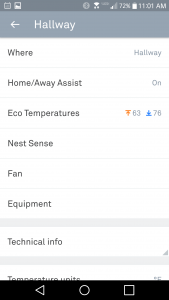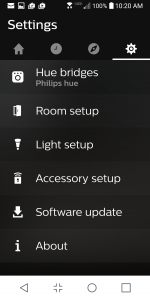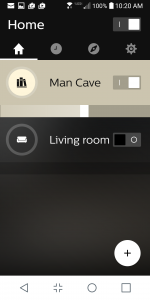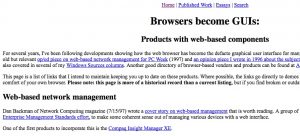I began a series of reviews for Network World on securing the smart home. These three articles were published earlier this year:
- Article #1: General issues (4/17)
- Article #2: Amazon Alexa vs. Google Home (4/17)
- Article #3: Linksys Velop router (5/17)
Since then, I have written additional stories, but before I introduce those I want to take a step back and review the decision process that I would recommend in terms of what gear you should buy and at what point during your smarter home networking automation journey. And let’s also take a moment and review the decisions that you have made so far on hubs and wireless access points and how these decisions can influence what you buy next.
While there is no typical decision process for this gear, here are a series of five questions that you should have begun thinking about:
- Do you already own a smart thermostat? If not, make sure you pick the one that will work with your hub device. Nest doesn’t work with Apple’s HomeKit, for example. I will talk about my experience with Nest in a future installment. Also, you might also want to make sure that you can upgrade your older thermostat with something more intelligent, in terms of wiring and network access.
- Are you in the market for a new TV? If you are, consider what your main motivation is for buying one and which ecosystem (Apple, Google or Amazon) you want to join and use as your main entertainment provider. It used to be that buying a TV was a major purchase, but today’s flat screens are relatively inexpensive. Most new TVs come with wireless radios and built-in software to connect with Netflix, Amazon, and other streaming providers too.
- Are most of your cellphones Android or iOS? While many of the smart home products work with apps on both kinds of phones, that doesn’t necessarily mean that features are at parity between the two phone families. In some cases, vendors will prefer one over the other in terms of their app release schedule and that could be an issue depending on which side you are on. If you are serious about considering Apple HomeKit products, obviously you will need at least one Apple phone for managing its basic features. While Apple’s ecosystem supports the largest collection of smart home devices, overall, many of the smart home products will work on either Google Home or Amazon Alexa as well.
- Do you have sufficient wireless and wired infrastructure to support where you want to place all your devices? As I mentioned in my last installment, one of the major reasons for using a better wireless infrastructure like the Linksys Velop is because of its wider radio coverage area. Make sure you understand what your spouse is willing to tolerate in terms of wiring and AP placement too while you are assembling your new network requirements and scouting out potential AP locations around your home. As part of this decision, you might also need to upgrade your ISP bandwidth plan if you are going to be consuming more Internet services such as video and audio streaming.
- Do you have enough wired ports on your network switch? With all the devices that you plan on using, you probably are going to run out of wired ports. And while you might think that most smart home products are connected wirelessly, many require some kind of wired gateway device (the Philips Hue is an example here) that will consume a wired Ethernet port.
Those five questions should help get you started on your smart home journey. But before you purchase anything else, you might want to consider these security issues too.
- Do you understand the authentication requirements and limitations of each smart home app? One of the biggest limitations of the smart apps is how they set up their security and authentication. In many cases, the app can only use a single login ID and password. If you want multiple family members to use the app, you may have to share this information with them, which could be an issue. You might want to consider a document that lays out your family “rights management” — do you want your kids to be able to remotely control your thermostat or monitor your home security cameras? What about your spouse? This begs the next question:
- Who in the family is authorized to make changes to your smart infrastructure? By this I mean your network configuration and access to your computers, printers, and other IT gear. Again, in the past once this was set up it wasn’t often changed by anyone. But the smart home requires more subtle forms of access and this could be an issue, depending on the makeup of your family and who is the defacto family IT manager.
- You should plan for the situation when you (or another family member) loses their phone with all of your connected apps and authentication information. This is one of the major security weaknesses of the smart home: your apps hold the keys to the kingdom. Most of the apps automatically save your login info as a convenience, but that also means if you lose your phone, it can be a massive inconvenience. Some of these apps will only work when they are on your local network, but others can reach out across the Internet and do some damage if they fall into the wrong hands. Given how often your family members lose their phones (I know of one 20-something who loses her phone twice a year), this might be worthwhile. You might want to record the procedures for resetting your passwords on your various connected apps and other login information.
- What happens when one of your smart devices is compromised? The reports earlier this year about the compromised web server that comes with a Miele dishwasher are somewhat chilling, to say the least. How can you detect when a smart device is now part of a botnet or is running some malware? We will have some thoughts later in the series, but just wanted to raise the issue.
As you can see, making your home network smarter also means understanding the implications of your decisions and the interaction of products that now could create some serious family discussions, to say the least.
The remaining reviews in the series include:
- Article #4: Philips Hue smart lighting systems
- Article #5: Google Nest thermostat
- Article #6: The Netgear Arlo webcams






 In the old days — perhaps one or two years ago — security professionals were fond of saying that you need multiple authentication factors (MFAs) to properly secure login identities. But that advice has to be tempered with the series of man-in-the-middle and other malware exploits on MFAs that nullify the supposed protection of those additional factors. Times are changing for MFA, to be sure.
In the old days — perhaps one or two years ago — security professionals were fond of saying that you need multiple authentication factors (MFAs) to properly secure login identities. But that advice has to be tempered with the series of man-in-the-middle and other malware exploits on MFAs that nullify the supposed protection of those additional factors. Times are changing for MFA, to be sure.
 This week Paul Gillin and I are guests on Shel Holtz’ For Immediate Release podcast. We talk about these topics:
This week Paul Gillin and I are guests on Shel Holtz’ For Immediate Release podcast. We talk about these topics:
 I asked my favorite UX consultant,
I asked my favorite UX consultant,